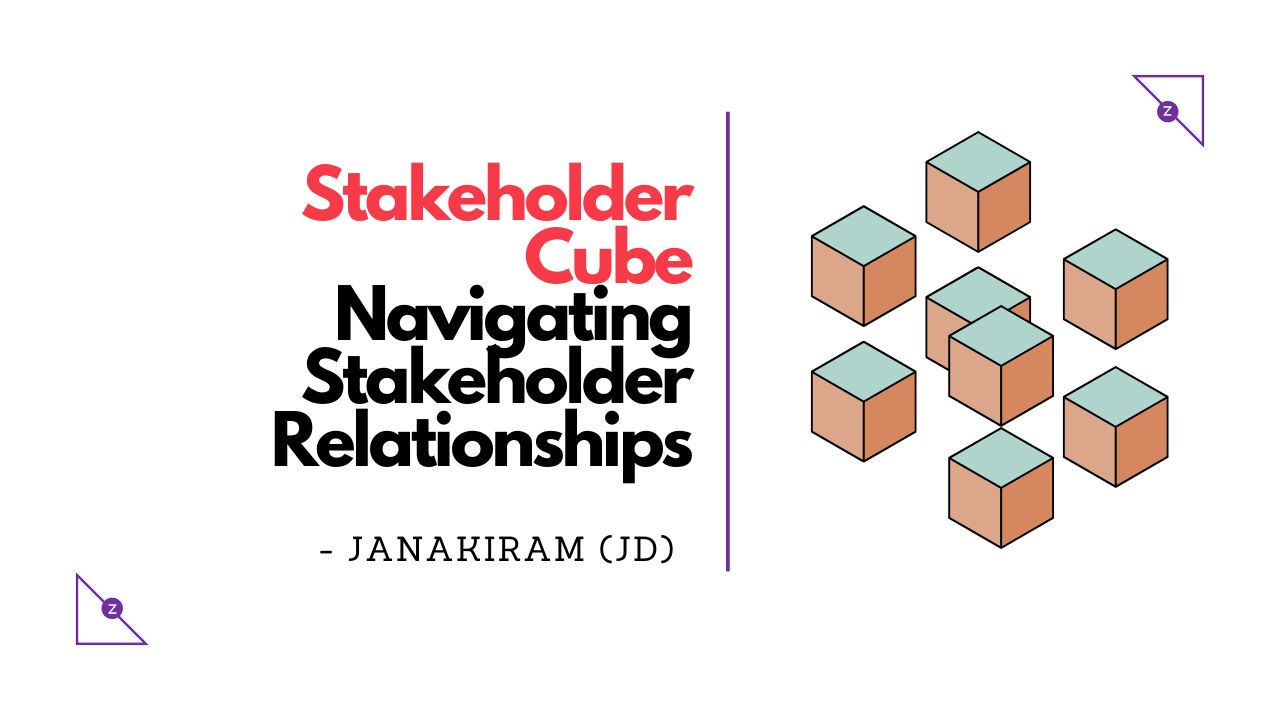Stakeholder analysis is a systematic process used in project management and business to identify, assess, and prioritize the individuals or groups (stakeholders) who have an interest in or can be affected by a project, initiative, or organization. The primary goal of stakeholder analysis is to understand the expectations, interests, and influence of these stakeholders to effectively manage their involvement and contributions.
However, in project management and stakeholder analysis, you may encounter various tools and models to assess and manage stakeholders. For instance, one common model is the stakeholder analysis matrix, which typically involves assessing stakeholders based on their level of interest and influence on a project.
What is Stakeholder Cube?
The stakeholder cube is a three-dimensional analytical framework that considers the power, interest, and attitude of stakeholders. Stakeholders can be positioned within the cube based on their influential or insignificant power and their active or passive interest in a project or initiative.
Stakeholders can be classified as either supporters or obstacles in terms of their attitude. The cube method comprehensively encompasses all three dimensions—power, interest, and attitude—and categorizes stakeholders accordingly. This approach adeptly considers various aspects of the stakeholder’s stance, providing a clear representation of their overall significance to the project.
Video: Stakeholder Cube
It is a technique used for analyzing and prioritizing stakeholders in your Project. In this technique, we do an analysis of Stakeholders on Three dimensions.
- Attitude
- Power and
- Interest
Let us try to understand these factors one by one.
#1. Attitude
This determines whether the Stakeholder is “For” or “Against” the Project. Stakeholder attitude refers to the opinions, feelings, beliefs, and perceptions that individuals or groups hold regarding a project.

Understanding stakeholder attitudes is crucial for businesses, organizations, and projects because these attitudes can influence the success or failure of initiatives. Positive attitudes from stakeholders can lead to support, cooperation, and collaboration, while negative attitudes can result in resistance, opposition, or other challenges.
#2. Power
Power is the degree of ability of the stakeholder to do what they want with the Project and How they want to do it. Power is associated with Authority. Stakeholder power refers to the ability of individuals or groups to influence or impact the decisions, actions, and outcomes of a project.
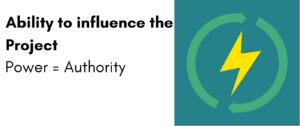
Stakeholder power is not uniform across all stakeholders; some have more influence and control over the organization or project, while others may have less. The power of stakeholders is often determined by various factors.
#3. Interest
Stakeholder interest refers to the concerns, expectations, needs, or goals that individuals or groups have in relation to a particular project, or initiative.
- Interest represents how much a Stakeholder is impacted by the Project
- The impact can be positive or negative
- The degree of interest depends upon the severity of impact

Understanding and managing stakeholder interests is a critical aspect of effective stakeholder management. Organizations need to identify key stakeholders, analyze their interests, and develop strategies to address and align these interests with the organization’s goals.
Well, we represent the three dimensions as a cube like so. You can see the three dimensions represented by the axes. And then we start mapping the stakeholders based on the combination of factors they belong to
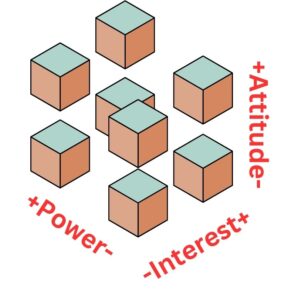
Let us look at the possible combinations.
High Power-Low Interest-Low Attitude
These are called Influential Passive Blocker. These Stakeholders are like ticking time bombs. Defuse them before they explode
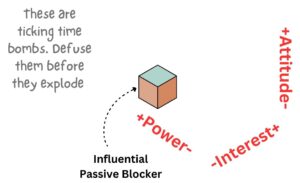
High Power-Low Interest-High Attitude
These are called Influential Passive Backer. These are like sleeping giants. You have to Engage them closely.
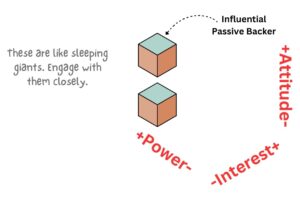
High Power-High Interest-High Attitude
These are called Influential Active Backer. They are beyond friends. These are the Saviors who can rescue during crisis
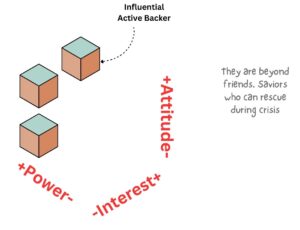
High Power-High Interest-Low Attitude
These are called Influential Active Blocker. They are possible saboteurs. You have to Monitor them closely
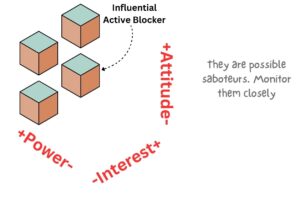
Low Power-Low Interest-Low Attitude
These are called Insignificant Passive Blocker. They are like tripwire. You need to Watch out!
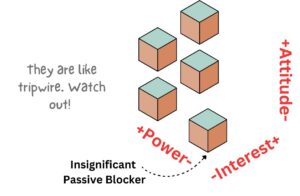
Low Power-Low Interest-High Attitude
These are called Insignificant Passive Backer. These are acquaintances. They are Aware but not against the Project
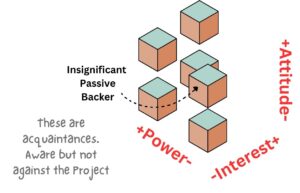
Low Power-High Interest-High Attitude
These are called Insignificant Active Backer. These are friends of the Project. Your allies.
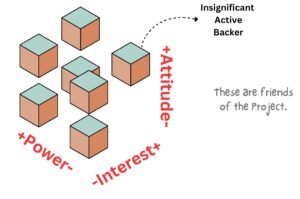
Low Power-Low Interest-High Attitude
These are called Insignificant Active Blocker. These are irritant, as their interest is not in project success
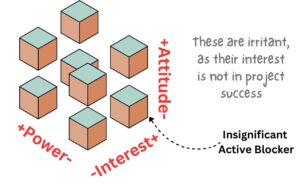
Conclusion
And that is all! Now you know your Stakeholders better. Stakeholder analysis is a valuable tool for mitigating risks, addressing potential conflicts, and ensuring that the interests of key stakeholders are considered in decision-making processes. It helps project managers and organizations navigate complex relationships, build support, and enhance the overall success of their endeavors.

About Zaidan Consulting
Zaidan Consulting are specialists in Project and Program Management space. Our training offerings include:
- Project Management Training
- Agile Training
- PMI®-ACP® Prep Training
- PMI®-PMP® Prep Training
- PMI®-CAPM® Prep Training
- ScrumStudy™ Authorized Training Partner (A.T.P)
Or you can contact us @+(91) 7672011471
Or Email us: contact@zaidanconsulting.com
